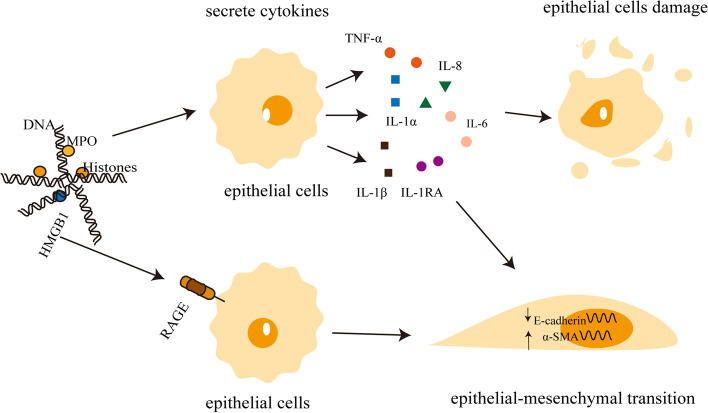Fig. 2.
NETs drive lung epithelial injury and pulmonary fibrosis. MPO, DNA and histones in Nets can cause damage to alveolar epithelial cells, which release a large number of pro-inflammatory and pro-fibrotic factors (including IL-6, IL-8, IL-1α, IL-1β and TNF-α) and initiate subsequent inflammatory immune repair. Excessive repair of alveolar epithelial cells after injury is an important mechanism of pulmonary fibrosis. HMGB1 in NETs could act on the RAGE receptors in lung epithelial cells, which in turn leads to the downregulation of the epithelial cell marker E-cadherin and the upregulation of the myofibroblast cell marker α-SMA. NETs: neutrophil extracellular traps; MPO: myeloperoxidase; HMGB1: high mobility group box 1; RAGE: the receptor of advanced glycation end-product; α-SMA: alpha-smooth muscle actin

